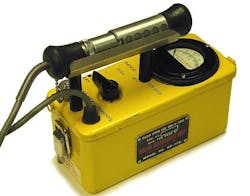DARPA asks industry to develop pocket-sized radiation detectors to foil nuclear terrorism
Scientists at the U.S. Defense Advanced Research Projects Agency (DARPA) in Arlington, Va., have issued a broad agency announcement (DARPA-BAA-14-11) for the SIGMA program, which seeks ways of building a small and affordable radiation detector to identify hidden threats ranging from special nuclear materials to radiological sources.
Direct measurement of gamma and neutron emission remains one of the few definitive to detect and identify special nuclear materials and radiological sources, DARPA officials say.
Needed are belt-worn, pocket-size, wearable, and large-area radiation detectors that represent an order of magnitude less expensive with substantially increased detection capability than what is available today, researchers say.
Revolutionary ideas at low technological readiness levels (TRLs) are encouraged, but proposers must lay out a path for rapid evaluation and development, along with a potential path for scale-up production, DARPA officials say.
The program will be in two phases. First it will develop core technical component capabilities, define design parameters, build prototypes, and establish base manufacturing capabilities. Second, the DARPA SIGMA program will refine manufacturability and deliver devices at target prices for large-scale testing of as many as 10,000 units.
Several phase-one contracts are expected, and DARPA officials expect companies to work with other teams on system-level experiments and testing. DARPA eventually will ask performers to submit their prototype detectors for final testing.
Phase 1 will be for two or three years, depending on the complexity of proposals, with a goal of buying detectors after two years for the first large-scale experiments. DARPA researchers understand that the more revolutionary designs will take longer to develop.
Full proposals are due online at https://dsobaa.darpa.mil no later than 30 Jan. 2014. Email questions or concerns to DARPA's Vincent Tang at [email protected].
More information is online at https://www.fbo.gov/spg/ODA/DARPA/CMO/DARPA-BAA-14-11/listing.html.

